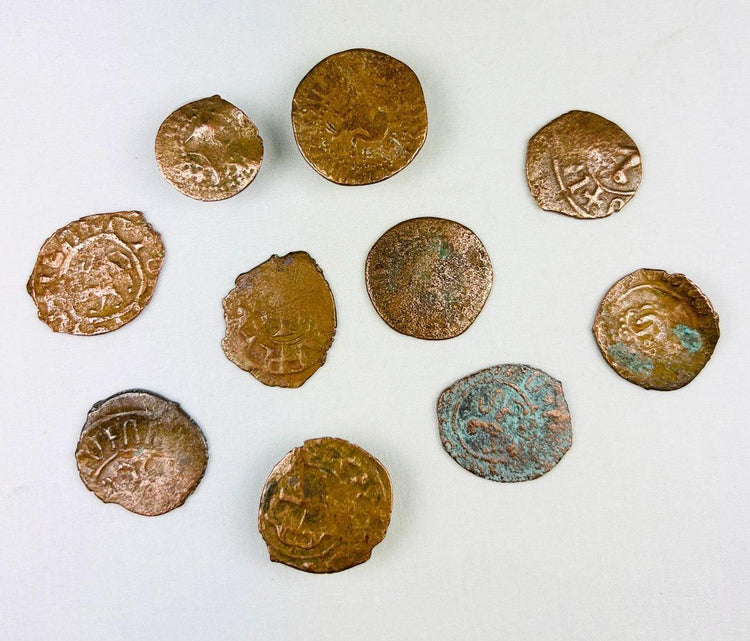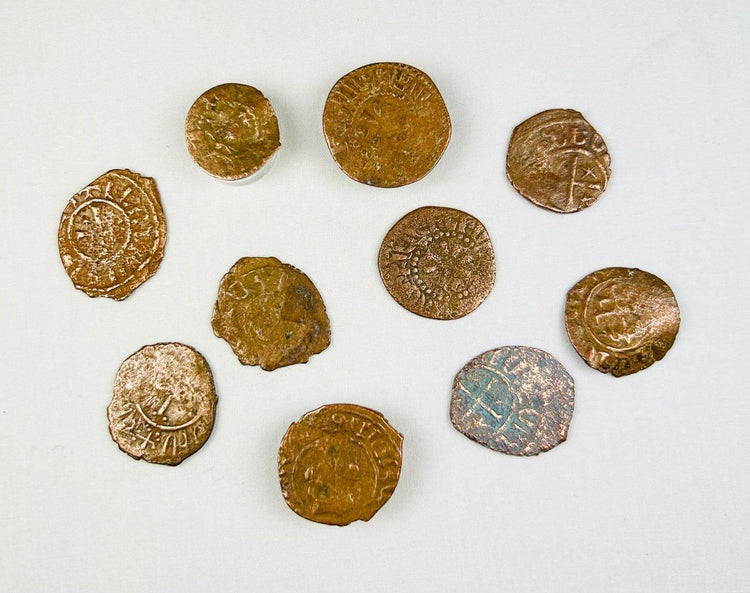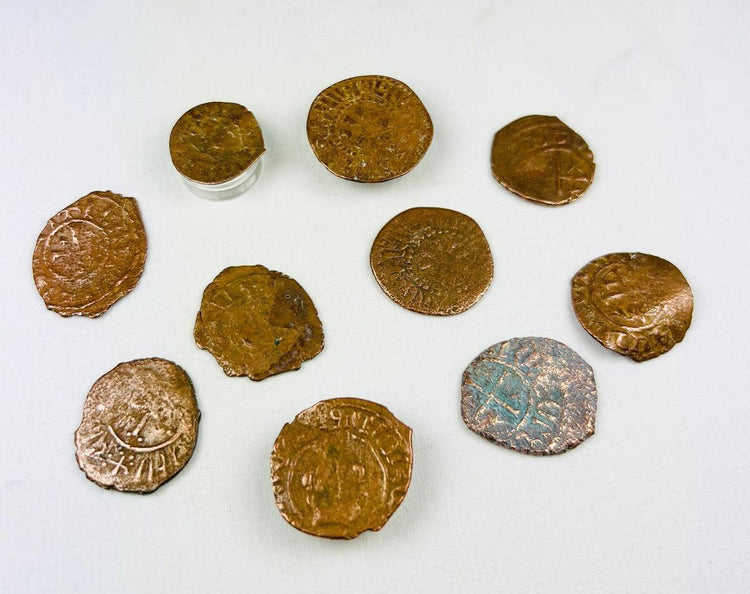Set of 10 | Crusader Bronze Coins | Circa 11th - 13th Century AD
Description
More
Less
Historical Context & Origin
Region: Crusader States (Levant)
Material: Cast and struck bronze with natural patina
Period: 11th–13th Century AD (c. 1000–1291)
Description
This curated set of ten Crusader bronze coins represents the commerce, faith, and conflict of the medieval Crusader States. Each coin displays symbols of Christianity, including crosses, religious motifs, and Latin inscriptions. Their irregular shapes and hand-struck quality reflect the minting methods of the time, when practical circulation and symbolic imagery were both essential. These coins were not only used for trade but also served as instruments of identity and propaganda during a period of intense cultural and military exchange.
Features
- Christian symbols, crosses, and Latin inscriptions
- Irregular flans and hand-struck details typical of Crusader coinage
- Varied shapes and sizes, enhancing the historical diversity of the collection
- Rich green and brown patinas from centuries of burial
Cultural Significance
Crusader coinage carried more than monetary value—it projected the legitimacy of Christian rule in the East and reinforced the Crusader States’ political and religious authority. Coins circulated among both Christian and Muslim populations, reflecting the intertwined economies of the region. Today, they are studied as artifacts of cultural exchange and conflict, offering insights into the medieval Mediterranean world.
Condition
The coins display natural surface wear, mineral deposits, and oxidation, with inscriptions and symbols remaining legible on many examples. Others show softened details due to age and burial, but all retain their authenticity. No modern restoration.
Dimensions (approximate)
Largest coin: 1 in (25 mm) diameter
Smallest coin: 5/8 in (16 mm) diameter
Age
Approximately 800–1,000 years old
Description
Historical Context & Origin
Region: Crusader States (Levant)
Material: Cast and struck bronze with natural patina
Period: 11th–13th Century AD (c. 1000–1291)
Description
This curated set of ten Crusader bronze coins represents the commerce, faith, and conflict of the medieval Crusader States. Each coin displays symbols of Christianity, including crosses, religious motifs, and Latin inscriptions. Their irregular shapes and hand-struck quality reflect the minting methods of the time, when practical circulation and symbolic imagery were both essential. These coins were not only used for trade but also served as instruments of identity and propaganda during a period of intense cultural and military exchange.
Features
- Christian symbols, crosses, and Latin inscriptions
- Irregular flans and hand-struck details typical of Crusader coinage
- Varied shapes and sizes, enhancing the historical diversity of the collection
- Rich green and brown patinas from centuries of burial
Cultural Significance
Crusader coinage carried more than monetary value—it projected the legitimacy of Christian rule in the East and reinforced the Crusader States’ political and religious authority. Coins circulated among both Christian and Muslim populations, reflecting the intertwined economies of the region. Today, they are studied as artifacts of cultural exchange and conflict, offering insights into the medieval Mediterranean world.
Condition
The coins display natural surface wear, mineral deposits, and oxidation, with inscriptions and symbols remaining legible on many examples. Others show softened details due to age and burial, but all retain their authenticity. No modern restoration.
Dimensions (approximate)
Largest coin: 1 in (25 mm) diameter
Smallest coin: 5/8 in (16 mm) diameter
Age
Approximately 800–1,000 years old
You May Also Like

















